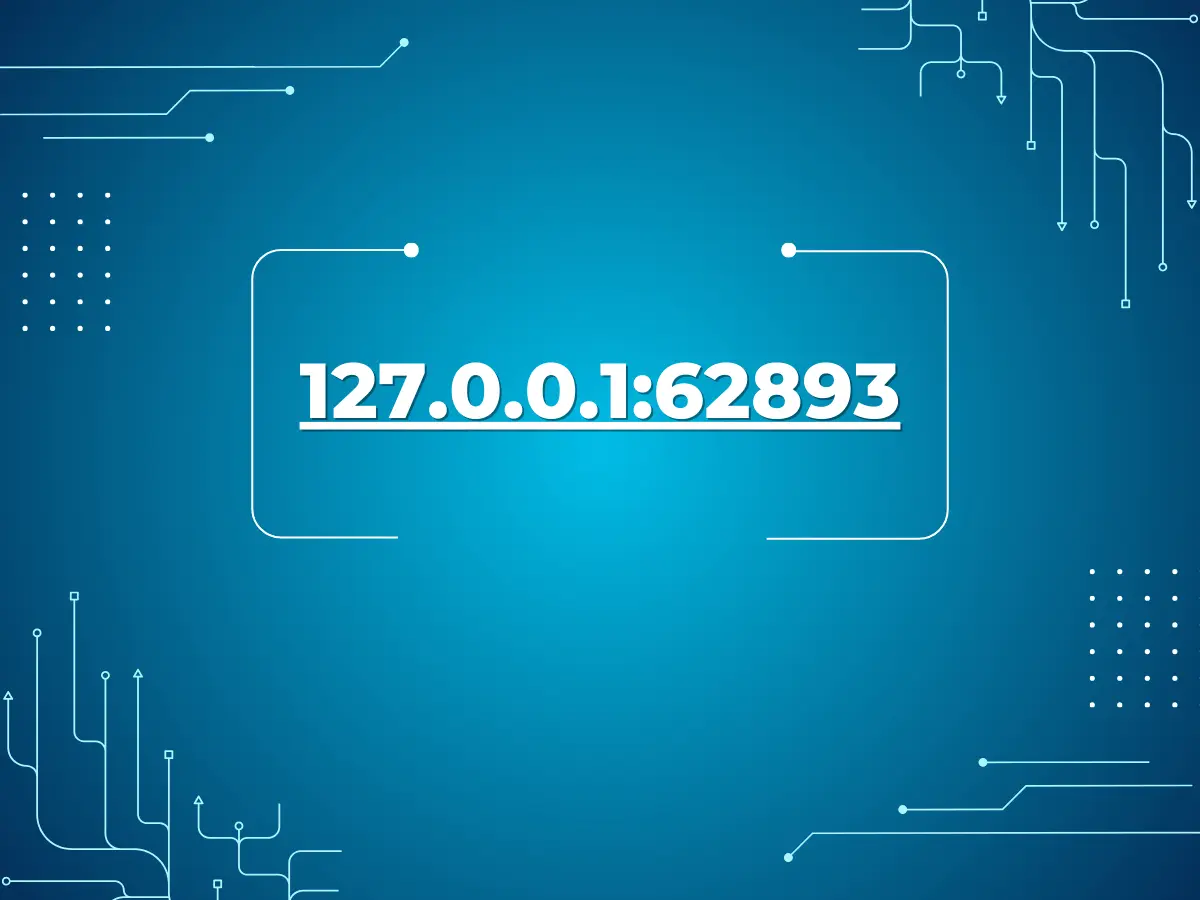127.0.0.1:62893 – Understanding the Localhost Journey
In the vast and intricate networking world, few concepts are as fundamental and intriguing as the local host, mainly when represented by the IP address 127.0.0.1. This address, combined with a specific port such as 62893, serves as the cornerstone for countless development environments, testing protocols, and even the daily operations of network administrators. In this article, we delve into the nuances of 127.0.0.1:62893, exploring its significance, functionality, and vital role in computer networking.
What is 127.0.0.1?
The IP address 127.0.0.1 is universally recognized as the local host address. A host computer uses this loopback address to refer to itself, allowing for testing network-related software and services without needing to connect to an external network. When a laptop pings 127.0.0.1, it sends a message to itself, verifying that the IP stack is functioning correctly.
Why Use 127.0.0.1?
Using 127.0.0.1 allows developers and system administrators to create a controlled environment to simulate network interactions. This is particularly useful when testing applications that require network functionality, as it eliminates external variables that might affect performance or reliability. Additionally, the local host is indispensable in scenarios where network access is restricted, allowing for the continuation of development and testing without external dependencies.
The Significance of Port 62893
In networking, a port serves as a communication endpoint for an application or service. The number 62893 is an example of an ephemeral port, typically assigned temporarily by the operating system to manage data flow between applications.
Why Port Numbers Matter
Port numbers are crucial in network communication as they help identify specific processes or services on a device. When an application connects to the network via 127.0.0.1:62893, the 62893 port helps direct the data to the correct service on the local machine. Data might be misrouted or lost without proper port management, leading to errors and system inefficiencies.
How 127.0.0.1:62893 Powers Development
The combination of 127.0.0.1 and a specific port like 62893 is instrumental in developing and testing web applications. By binding a web server to 127.0.0.1:62893, developers can host and test their applications locally, ensuring they function as intended before deployment.
Local Web Servers
An everyday use case for 127.0.0.1:62893 is setting up a local web server. By doing so, developers can run their web applications in an environment that mirrors a live server. This setup is crucial for debugging and testing, allowing developers to identify and fix issues in a safe, isolated environment. For instance, when a developer is working on a new feature for a website, they can bind the development server to 127.0.0.1:62893 and test the feature without impacting the live site.
Database Testing
Another critical application of 127.0.0.1:62893 is in database testing. By binding a database server to this address and port, developers can simulate interactions with a database without needing to connect to an external database server. This ensures the application can handle database operations effectively, even in a local environment.
Security Implications of Using 127.0.0.1:62893
While 127.0.0.1 is generally considered secure, given that it’s only accessible from the local machine, there are security considerations to remember.
Port Scanning
One potential security risk is port scanning, where attackers probe different ports on a machine to identify open ones. If sensitive services are bound to 127.0.0.1:62893, malicious software running on the same machine could exploit them. To mitigate this, developers should ensure that any services bound to localhost are secure and do not expose sensitive information.
Access Control
It’s also crucial to implement strict access controls when working with 127.0.0.1:62893. Even though the address is local, improper configurations can expose services to unauthorized access. Developers should ensure that only trusted processes have access to these services and that any data exchanged over 127.0.0.1:62893 is encrypted if necessary.
Troubleshooting Common Issues with 127.0.0.1:62893
While working with 127.0.0.1:62893 is generally straightforward, several issues can arise, particularly in complex development environments.
Port Conflicts
One common issue is port conflicts. If another service is already using 62893, attempting to bind a new service to 127.0.0.1:62893 will result in an error. To resolve this, developers can stop the conflicting service or choose a different port.
Firewall Settings
Another potential problem involves firewall settings. Some firewalls might block specific ports, including 62893, preventing applications from binding to 127.0.0.1. Developers should ensure that their firewall settings allow the ports to be opened.
Application Crashes
Finally, application crashes can occur if the application bound to 127.0.0.1:62893 is not handling data correctly. Debugging these issues often involves examining the application logs and ensuring that the data sent and received via 127.0.0.1:62893 is appropriately formatted and within expected parameters.
Conclusion
The address 127.0.0.1:62893 is more than just a string of numbers; it represents a critical tool for developers, system administrators, and network engineers. By effectively understanding how to use 127.0.0.1 in conjunction with specific ports like 62893, professionals can create robust, reliable, and secure applications. As the backbone of local development environments, 127.0.0.1:62893 is indispensable for anyone serious about building and testing networked applications.
Also read this: What Is Game Folpzo333 in Klupzo333 PCs? A Guide to Fixing Klupzo333 Problems
FAQs
Q1: What is 127.0.0.1:62893 used for?
A1: The address 127.0.0.1:62893 is used for local development and testing. It represents the localhost IP address with a specific port, allowing developers to run and test applications on their local machines without connecting to an external network.
Q2: Why is 127.0.0.1 known as localhost?
A2: 127.0.0.1 is called localhost because it is a loopback address that directs traffic back to the same device, allowing a computer to send and receive data from itself. This is crucial for testing and development.
Q3: What happens if port 62893 is already in use?
A3: If port 62893 is already in use, you will encounter an error when trying to bind a new service to it. You can resolve this by stopping the conflicting service or selecting a different port for your application.
Q4: Can 127.0.0.1:62893 be accessed remotely?
A4: No, 127.0.0.1:62893 is only accessible from the local machine. It is used for local testing and development and cannot be accessed remotely.
Q5: How can I secure services running on 127.0.0.1:62893?
A5: To secure services on 127.0.0.1:62893, ensure that only trusted processes have access, use robust authentication methods, and encrypt any sensitive data being transferred. Additionally, regularly monitor for port scanning attempts.














Post Comment